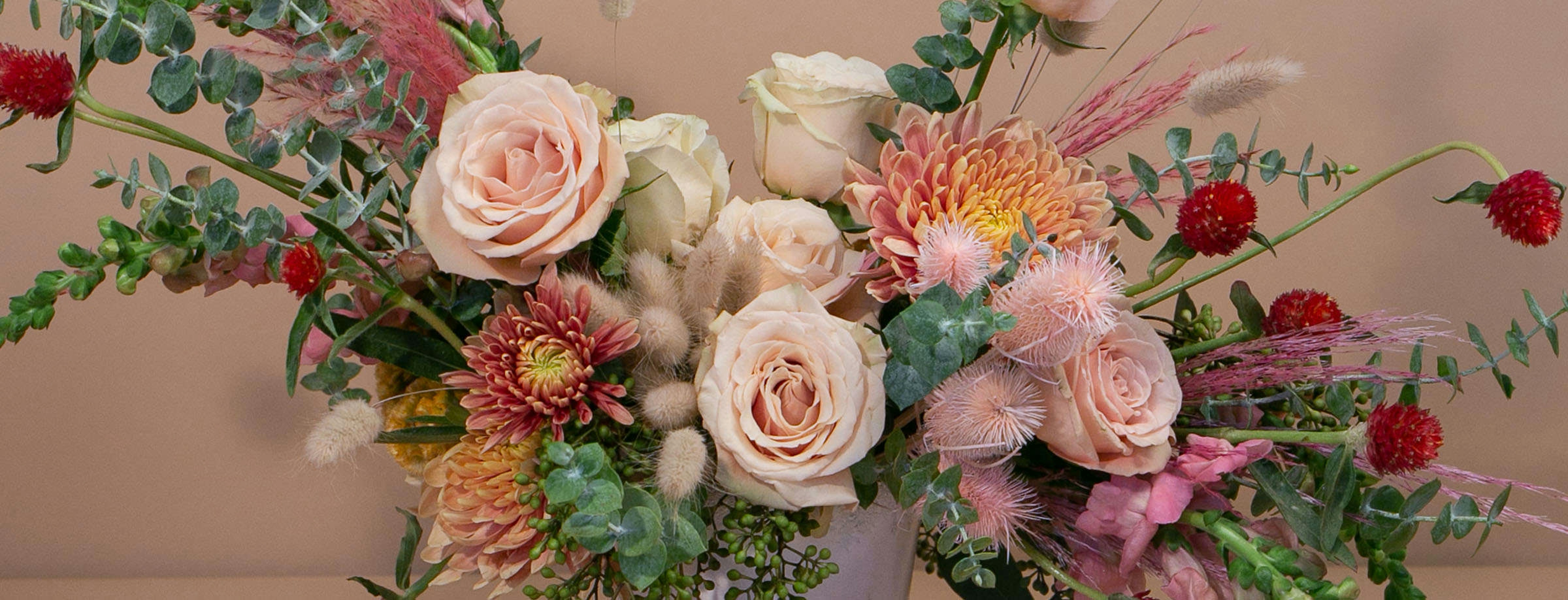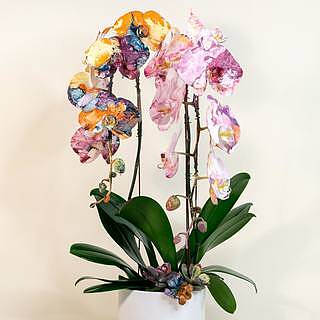A perennial favorite, peonies are one of the most beloved flowers in the world. With their extravagant, fluffy blooms composed of layers of delicate petals, lovely, sweet scent, and range of vibrant colors, it's no wonder this flower is often found in important celebrations and luxurious locales. Lush, showy, and elegant, the amazing peony has a rich history steeped in cultural symbolism.
 Peony Blooming Season
Peony Blooming Season
Peonies have a short season, generally blooming from late spring to early summer depending on their location and type. The ephemeral quality of this gorgeous flower adds to its allure and desirability. May and June are the months where there is the most availability, but due to its popularity, many nurseries offer early-, mid-, and late-blooming varieties so they can be enjoyed for as long as possible. Peonies make amazing cut flowers, and their bloom and fragrance can last for days in a vase.
Class
The Peony is a flowering plant that belongs to the genus Paeonia, which is thought to contain 30- 40 species of the plant today with hundreds of varieties.
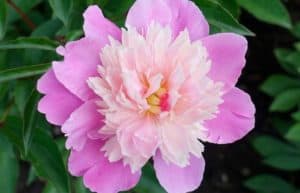
Anemone ' A single row of large guard petals surrounding numerous smaller petals.

Single ' Comprised of one or two rows of wide overlapping petals surrounding a central mass of yellow stamens.
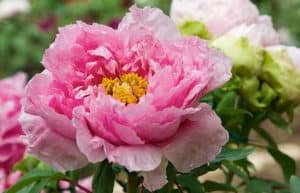
Japanese ' Has one or more rows of large outside petals surrounding a decorative center of staminodes (sterile stamens).
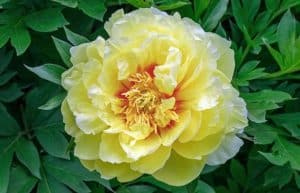
Semi-Double ' Comprised of 5 or more outside rows of petals with a center of smaller petals mixed with yellow stamens.
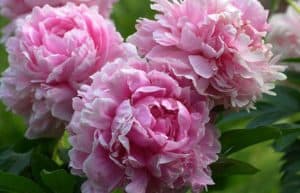
Double ' Comprised of sumptuous, numerous overlapping petals that create large, full blooms with no stamens. This is the most popular variety by far.
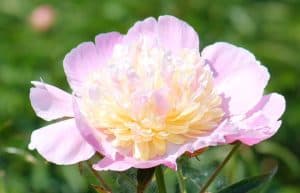
Bomb ' A row of large guard petals surrounding numerous petals within. Stamens have transformed into petals creating a large, round, pom-pom shape.
Name Origin
The peony has two origin stories dating back to Greece. One tells the story of Paeon, a student of Asclepius (the Greek God of Medicine and Healing), who used milk from the peony root to heal Pluto. Asclepius became angry and jealous that his pupil was outshining him and decided to kill him. Zeus interfered and protected Paeon from the wrath of Asclepius by transforming him into the peony flower.
The other origin story describes a day when Apollo was flirting with a nymph named Paeonia, who was shy and bashful, and became embarrassed when she noticed Aphrodite watching them. Angered by the nymph attracting Apollo's attention, Aphrodite turned Paeonia into a flower.
History
Peonies date back to 1,000 BC when they first appeared in Chinese gardens. The people of China then began cultivating peonies, originally for flavoring food and medicinal purposes, but then for their beauty and elegance during the Tang Dynasty. Peonies were associated with great wealth and royalty and, from around 618 to 907 AD, were bred in the Imperial courts and became an essential part of daily court life.
In the 11th century, the people of Japan fell in love with the beautiful peony and began growing them for their beauty. France and England jumped on the bandwagon in the 18th century when they began cultivating peonies for their aesthetic beauty and sweet fragrance.
Cool Facts About the Peony
- Peony plants can outlive most humans offering up their gorgeous blooms each spring for about 100 years.
- If you need your peonies to open quickly for an important event, place them in a sunny, warm room to speed up the process.
- Known as the 'King of Flowers' in China, the peony can be found in many traditional Chinese paintings, embroidery, and decor.
- The white peony has long been used in traditional Chinese medicine and is one of the oldest remedies known.
- Peonies are originally from China but are grown all over the world now.
- The peony is the traditional flower symbol of China and, before the plum blossom, was the country's national flower.
- There are several hundred peony varieties.
- The Chinese name for 'peony' translates to 'most beautiful.'
- As the peony blooms, it produces sweet nectar.
- Peonies travel best in bud form.
- They are the state flower of Indiana.
- The peony is the 12th anniversary flower.
- A peony bud is the size of a golf ball and will open up to 3 times its size.
- Peony petals are edible and perfect for flavoring drinks or topping a salad.
General Symbolism of the Peony Flower
Across many cultures, peonies generally symbolize good fortune and happiness in marriage, which is why they are popular wedding flowers. They are also widely known to symbolize wealth, prosperity, good luck, rebirth of relationships, and love.
In China, the peony represents wealth, power, and class and is a popular symbol in traditional Chinese art and literature. In Japan, peonies are recognized as symbols of honor, bravery, and good fortune (particularly red peonies). Due to the Greek myth about Paeonia, the Victorians associated the peony with bashfulness and beauty.
Color Symbolism of Peonies
More specific symbolism and meaning are tied to the color of the peony:
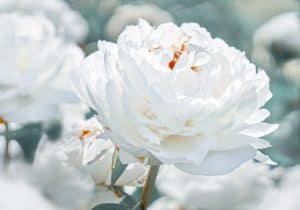
White Peonies ' Symbolize bashfulness and regret, which makes them a great choice for when you need to say, 'I'm sorry.'
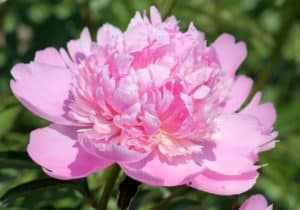
Pink Peonies ' Symbolize good luck, a happy marriage, and prosperity and are very popular in wedding bouquets.

Red Peonies ' Symbolize passion, love, honor, and respect making them the perfect choice for your SO at any point in your relationship.

Yellow Peonies ' Are associated with new beginnings which make them a great gift for new parents, a new job, or any new chapter someone is starting in their life.
Peonies also come in purple, coral, and orange but are less common and harder to find than the above colors.
Peony Purchasing Tips
To get the most out of its beauty and maximize its vase life, here are some quick tips on choosing a peony.
- Purchase While Still in Bud Form
This way you can fully enjoy the blooming process and they will last longer than if already in bloom. - Make Sure Their Leaves are Healthy
Quality peonies should have no damage to leaves such as blemishes, black or brown spots, yellowing, or signs of pests or disease. - Select Stems That are Clean and Sturdy
Peonies with soft and discolored stems often are a sign of bacteria in the plant.
Caring for Your Fresh-Cut Peonies
- Before placing your fresh blooms in a vase, cut diagonally about an inch off the bottom of each stem and remove any leaves that fall below the waterline.
- Place the cut stems in a clean vase that has at least three inches of room temperature water.
- Keep an eye on the water level as peonies drink up the water quickly. Clean and refill with water as needed.
- Avoid putting peonies in direct sunlight as this may damage them.
- To delay blooming, place peonies in a cold and dimly lit room, or in a dry area within your refrigerator away from fruits and veggies.
Flowers Similar to the Peony
When peonies are unavailable, but you still crave the look, elegance, and fullness of this gorgeous blossom, rest assured, as there are other floral varieties you can turn to that have similar big blooms. In place of peonies try:
- Large garden roses
- Ranunculus
- Carnations
- Camellias
- Double tulips
- Dahlias
- Hydrangea
Peony Occasions
From weddings to demonstrations of love, a symbol of good luck to congratulations, or just because to elevating the style of your home, peonies are perfect for nearly any occasion.
